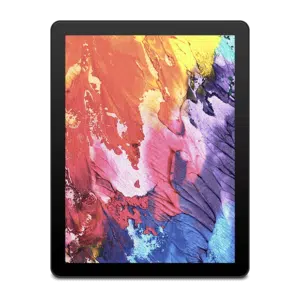What is an Electronic Paper Display and How Does It Work?
What is an Electronic Paper Display and How Does It Work?
Blog Article
Display technology is now a built-in section of our daily lives, showing in sets from smartphones and e-readers to large-scale marketing panels. Among the diverse array of custom E ink display, OLED (Organic Light-Emitting Diodes), and LED (Light-Emitting Diodes) have surfaced as some of the very widely discussed options. While each type acts a unique unique function, their variations in features, performance, and use cases make sure they are ideal for certain applications. Let's have a sooner go through the critical features of the display technologies.
Electronic Paper displays (ePaper)
Electronic Paper displays, also referred to as ePaper or Electronic Ink displays, are designed to imitate the look and readability of conventional Ink on paper. This engineering utilizes small microcapsules containing charged dark and bright contaminants stopped in a clear fluid. When an electric area is applied, the particles move to either side of the supplement, making a visible image. The picture remains fixed till another electric field is applied, making it well suited for showing text-based material such as books, papers, and e-readers.

Among the major advantages of ePaper displays is their low power consumption. Unlike traditional LCD
Knowledge Electronic Paper displays
A digital Paper display (ePaper) mimics the appearance of Ink on paper. Unlike traditional monitors, ePaper relies on its power to reflect normal mild as opposed to emitting its own. This technology not merely minimizes eye stress but also provides unparalleled readability in sunlight, rendering it suitable for e-readers and electronic signage solutions.
One standout function of ePaper displays is their incredibly reduced energy consumption. Since they only use energy when adjusting content, ePaper displays are very successful and suitable for battery-powered devices. Nevertheless, their renew rates are slower compared to OLED and LED displays, limiting their applicability to static or minimally energetic content.
OLED displays
OLED displays are known for their gorgeous visible quality, giving vivid colors, heavy blacks, and exceptional contrast. Each pixel in a OLED display emits its mild, removing the requirement for a backlight. This not merely enables leaner, more lightweight styles but in addition results in better energy effectiveness compared to LED using scenarios.
One critical benefit of OLED displays is their flexibility. They could be manufactured in rounded or flip-up patterns, making them common in cutting-edge smartphones and wearable devices. However, OLED screens come with challenges, such as for example susceptibility to burn-in and smaller lifespans in comparison to different technologies.
LED displays
LED displays, the most common of the three, rely on a backlit system to gentle their pixels. While not as visually striking as OLED E ink sign, LEDs are very resilient, long-lasting, and cost-effective. These features make sure they are suited to a larger selection of applications, including TVs, computer watches, and outside advertising.
LED displays usually conduct properly when it comes to perfection, making them a great choice for conditions with high normal light. Nevertheless, they fall short in reaching the exact same heavy comparison and color precision as OLED technology.

Ultimate Comparison
When determining between ePaper, OLED, and LED displays, the decision depends mainly on the supposed purpose. For static material like examining or signage, ePaper excels having its low energy use and large presence in natural light. OLED shines in applications wherever lively shades and mobility are paramount. Meanwhile, LED stays a dependable and cost-efficient solution for many different general-purpose needs.
Each display engineering delivers something unique to the table, ensuring that there's a great option for every situation. Understanding these differences might help users and firms produce educated decisions that suit their certain display requirements. Report this page